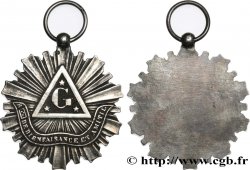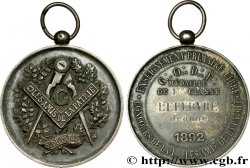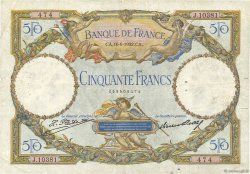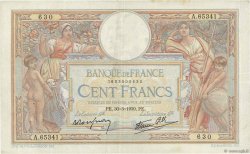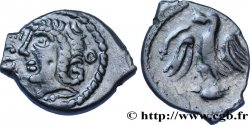fjt_613492 - FREEMASONRY LA CLÉMENTE AMITIÉ 1834
无库存.
所有在网站上销售的产品 (2022)
价格 : 150.00 €
所有在网站上销售的产品 (2022)
价格 : 150.00 €
种类 LA CLÉMENTE AMITIÉ
日期: 1834
材质 silver
直径 26 mm
模子方针 12 h.
重量 7,32 g.
侧面 lisse
印模 lampe
稀少度 R2
出版目录中的项代码 :
正面
正面的文字 CONSEIL DE LA CLÉMENTE AMITIÉ.
正面的说明书 Aigle bicéphale couronné posé sur une épée.
背面
背面的文字 K / S / 30 / 5834.
背面的说明书 Croix de Malte hachurée verticalement (le rouge héraldique) K à gauche, S à droite, 30 en haut et 5834 en bas.
评论
Ce jeton est une variante du Labouret 166 car il ne porte pas de bélière et est donc un jeton et non un bijou.
Marc Labouret consacre un gros article à cette loge dont il n’hésite pas à dire qu’elle est l’une des plus importantes du XIXe siècle avec Victor Schoelcher, Camille Pelletan ou Eugène le Roy .
La franc-maçonnerie s’implante en France aux alentours du premier quart du XVIIIe s. sous l’influence d’aristocrates anglais. Initiatique, elle est fondée sur le rite hiramique, du nom d’Hiram de Tyr, personnage biblique, architecte du roi Salomon sur le chantier du Temple et qui a résisté à la torture sans livrer ses secrets. Hiram a aussi donné un point de départ du calendrier maçonnique commençant 4000 ans avant le calendrier chrétien. Les symboles servent de signes de reconnaissance entre les initiés, notamment des outils de constructeur de cathédrales (équerre, compas, niveau, maillet, etc.), des formes (triangle, étoile), des nombres (trois, cinq, sept) et des lettres.
This token is a variant of the Labouret 166 because it does not have a bail and is therefore a token and not a piece of jewelry. Marc Labouret devotes a large article to this lodge, which he does not hesitate to say is one of the most important of the 19th century, along with Victor Schoelcher, Camille Pelletan and Eugène le Roy. Freemasonry was established in France around the first quarter of the 18th century under the influence of English aristocrats. Initiatory, it is based on the Hiramic rite, named after Hiram of Tyre, a biblical character, architect of King Solomon on the construction site of the Temple, who resisted torture without revealing his secrets. Hiram also gave a starting point for the Masonic calendar beginning 4000 years before the Christian calendar. Symbols serve as signs of recognition between initiates, including cathedral builder's tools (square, compass, level, mallet, etc.), shapes (triangle, star), numbers (three, five, seven) and letters
Marc Labouret consacre un gros article à cette loge dont il n’hésite pas à dire qu’elle est l’une des plus importantes du XIXe siècle avec Victor Schoelcher, Camille Pelletan ou Eugène le Roy .
La franc-maçonnerie s’implante en France aux alentours du premier quart du XVIIIe s. sous l’influence d’aristocrates anglais. Initiatique, elle est fondée sur le rite hiramique, du nom d’Hiram de Tyr, personnage biblique, architecte du roi Salomon sur le chantier du Temple et qui a résisté à la torture sans livrer ses secrets. Hiram a aussi donné un point de départ du calendrier maçonnique commençant 4000 ans avant le calendrier chrétien. Les symboles servent de signes de reconnaissance entre les initiés, notamment des outils de constructeur de cathédrales (équerre, compas, niveau, maillet, etc.), des formes (triangle, étoile), des nombres (trois, cinq, sept) et des lettres.
This token is a variant of the Labouret 166 because it does not have a bail and is therefore a token and not a piece of jewelry. Marc Labouret devotes a large article to this lodge, which he does not hesitate to say is one of the most important of the 19th century, along with Victor Schoelcher, Camille Pelletan and Eugène le Roy. Freemasonry was established in France around the first quarter of the 18th century under the influence of English aristocrats. Initiatory, it is based on the Hiramic rite, named after Hiram of Tyre, a biblical character, architect of King Solomon on the construction site of the Temple, who resisted torture without revealing his secrets. Hiram also gave a starting point for the Masonic calendar beginning 4000 years before the Christian calendar. Symbols serve as signs of recognition between initiates, including cathedral builder's tools (square, compass, level, mallet, etc.), shapes (triangle, star), numbers (three, five, seven) and letters








 对产品描述纠错
对产品描述纠错 打印
打印 分享我的选择
分享我的选择 提问
提问 Consign / sell
Consign / sell
 产品介绍
产品介绍
